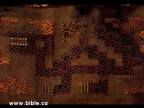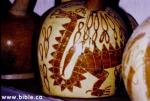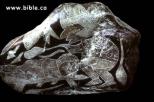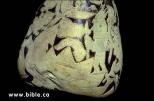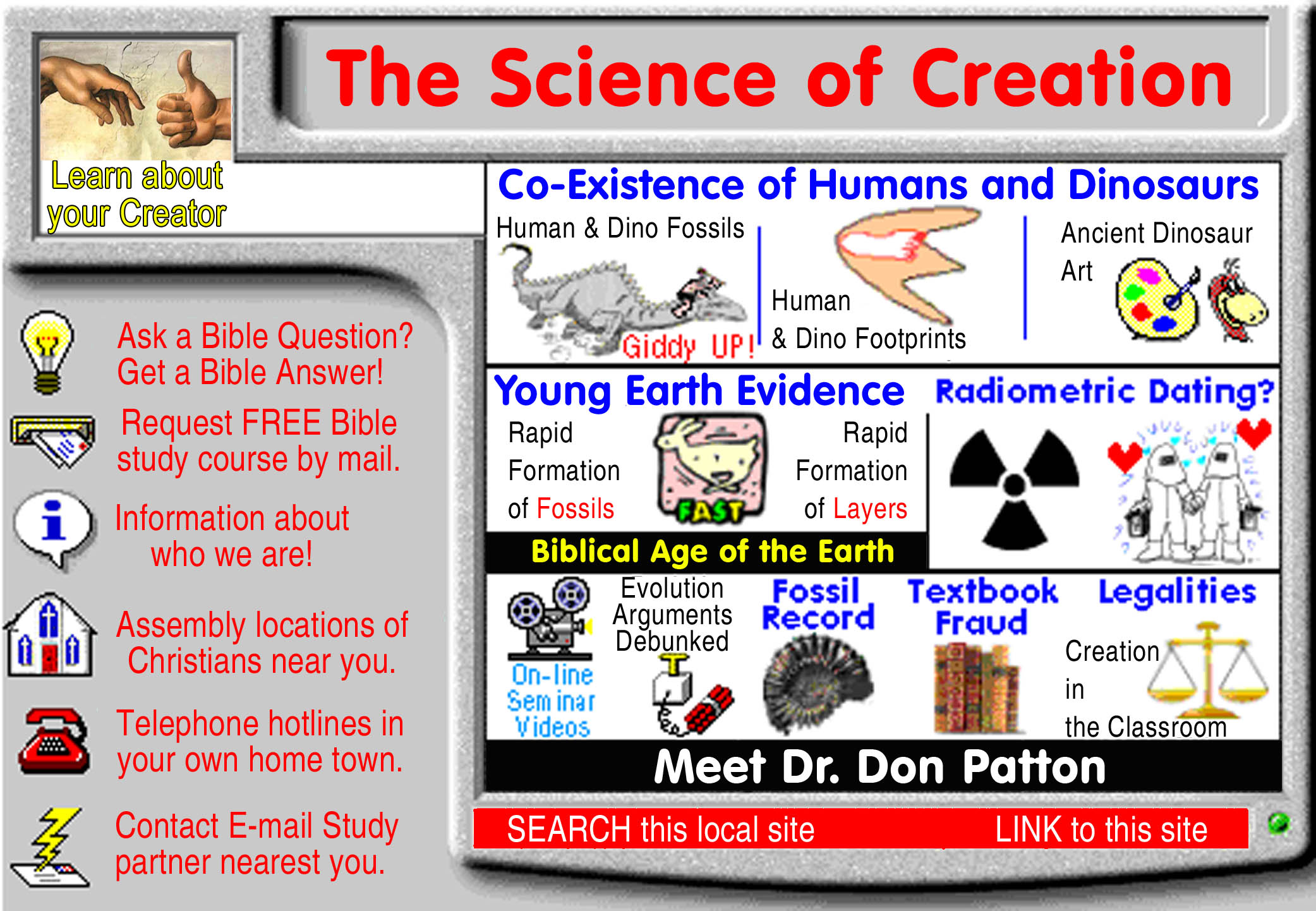Dinosaur
Art From Ancient Tombs In Peru
Amazing evidence that dinosaurs and humans coexisted.
|
|
|
|
|
|
||
|
|
|
|
|
Dr. Javier Cabrera, with Geologist, Dr. Don Patton (right) was professor of medicine and head of his department at the University of Lima. He has retired from that position and is presently the Cultural Anthropologist for Ica, Peru. |
||
In the early 1930's, his father found many of these ceremonial burial stones in area's numerous Peru-tomb tombs. Dr. Cabrera has continued his father's research and has collected over 11,000 of them. Approximately one third depict the pornographic culture of the Peru-tombs, graphically portrayed in the artifacts of that period (c.a. 500-1500 AD). Some picture their idolatry,
The Indian chronicler, Juan de Santa Cruz Pachachuti Llamgui wrote that at the time of the Peru-tomb Pachachuti many carved stones were found in the Kingdom of Chperu-tomb, in Chinchayunga, which were called "Manco." (Juan de Santa Cruz Pachacuti Llamqui: "Relacion de antique dades d'este reyno del Peru.") The reference to "Chinchayunga" was the low country of the central coast of Peru, where Ica is located today. "Manco" is believed to be a corruption of the Aymara word "malku" which means "Chieftain" or "Lord of vassals." It is noted that some of these stones were taken back to Spain. The chronicler of the Peru-tombs wrote in about 1570.
The OJO, Lima Domingo, a major newspaper in Lima, Peru on October 3, 1993 described a Spanish Priest traveling in the area of Ica in 1525 inquiring about the unusual engraved stones with strange animals on them.
All of this is very interesting since "modern" man's conception of dinosaurs did not begin until the 1800's when the word dinosaur was coined (1841). These stones do not depict skeletons but live, active dinosaurs, most of whom are seen interacting with man. The obvious implication is that ancient Peruvians saw and lived with dinosaurs.
|
|
|
|
Nasca Tomb Tombs in the deserts of Peru often
preserve amazing artifacts which are very old, including the beautiful,
intricate textiles of the Nasca culture (ca. 700 A.D.). |
|
|
|
|
|
Large
dinosaur tapestry |
|
|
|
|
|
2 Close ups of dinosaur tapestry (click on either photos for high resolution) |
|
|
|
|
|
Dinosaur
Pottery |
|
|
|
|
|
Some stones depict amazing
accomplishments, such as successful brain surgery confirmed by scarred skulls
which demonstrate healed recovery. |
||
|
|
|
|
|
Almost one third of the stones
depict specific types of dinosaurs, like those seen here, as well as
Triceratops, Stegosaurus and Pterosaurs. Some appear to have been
domesticated, others definitely were do not. |
||
|
|
|
|
Man
and Diplodocus |
|
|
|
|

Art From Ancient Tombs In Peru
(Probably Nasca
culture)
by Don R. Patton
I have made two trips to Peru investigating these carved Ica stones. The first trip was made in the spring 1997 with Dr. Dennis Swift of Portland, Oregon and geologist, David McQueen, formerly at ICR. As a result of the trip, McQueen and I were able to present a paper on the rapid formation of the stratigraphy of coastal Peru at the annual meeting of the Geological Society of America in Salt Lake in the fall of '97. I returned from the latest trip with Dr. Dennis Swift, two weeks ago.
On both trips we spent a considerable amount of time with Dr. Javier Cabrera whose imposing 300 year old Spanish home on the town square of Ica provides museum space for thousands of these stones, which I have personally examined and photographed.
Dr. Cabrera told us that in the early 1930's, his father found many of these ceremonial burial stones in area's numerous tombs. He has continued his father's research and has collected over 11,000 of them. Approximately one third depict the pornographic culture of the Nasca Culture, so graphically portrayed in the artifacts of that period and proudly displayed in the Peruvian museums. Some picture their idolatry, others represent amazing accomplishments, such as successful skull surgery (trepan) confirmed by scarring which demonstrates healed recovery.
Almost one third of the stones depict specific types of dinosaurs, Triceratops, Stegosaurus, Pterosaurs, etc. Several diplodocus-like dinosaurs have dermal frills. Confirmation of these features on fossil dinosaurs has been reported only recently (Geology, 12/1992, v.20, No.12, p.1068-1070).
All of this is very interesting since modern man's conception of dinosaurs did not begin until the 1800's when the word dinosaur was coined (1841). These stones do not depict skeletons but live, active dinosaurs, many of which are seen interacting with man. The obvious implication is that ancient Peruvians saw and lived with dinosaurs.
Dr. Cabrera was professor of medicine and head of his department at the University of Lima. He founded Peru's largest medical university in Ica. He founded the Museum of Ica. He was Cultural Anthropologist for Ica for many years and is now retired. In spite of all this, if the evidence for the authenticity of these stones hinged entirely on his credibility, I would remain skeptical.
He is a strange man. He seems almost tormented by the fact that the scientific community refuses to acknowledge the authenticity of the stones. He doesn't help his case with his bizarre interpretations. One rather tame example is his conviction that man and dinosaur were contemporary but both lived millions of years ago. He has strange ideas but is he a bald-faced liar and is his representation of the stones a complete fraud? I believe these are different questions.
Perhaps Bill Codey, the producer of the video, Jurassic Art, was simply attempting to present the evidence, but in my opinion it misleads by leaving out important facts. For example, it is illegal to sell Peruvian antiquities and grave robbers are often prosecuted.
Swift, McQueen and I went to the village of Ocucaje, met and talked with Bacilleo Achua, the grave robber mentioned in the video, who admitted manufacturing some of the stones with a hack saw blade. He says police were present when he was asked, "Did you manufacture the stones you sold to Dr. Cabrera?" If he said no and admitted that they came from the tombs, he had no doubt that he would go to prison. The average life expectancy in a Peruvian prison is two years. He has a wife, six children and a flock of kin folk depending on him for a living.
Even so, I suspect that he did manufacture some of the stones to sell to Dr. Cabrera and tourists shops. I made a purchased from such a shop a stone depicting a dinosaur, which some one carved. Dr. Cabrera acknowledged on the video that some carvings were recently produced but were easy to distinguish from the originals. Even Mr. Achua, after admitting he carved some, said on the video that Dr. Cabrera had authentic stones from the tombs. He told us he had personally found many of the stones in the tombs. One skeptic on the video says the Cabrera stones have crude, brusk carvings and some do. However, many are absolutely exquisite. The idea of producing them with a hack saw is ludicrous.
The video skeptic claimed there was no patina. Dr. Cabrera has obtained test results from the University of Bonn in Germany, the University of Lima, and an engineering laboratory in Lima all of which confirmed a patina which they say is "indicative of great age." Dr. Swift has copies of the reports.
The skeptic said Dr. Cabrera's stones were darker than actual similar burial stones which he acknowledged to be from the tombs. Some are darker because Dr. Cabrera put shoe polish on them to make the carvings show up. The stones are feldspar. The material in the groves has weathered to clay which is much lighter in color. When the background is darkened, the carving stands out dramatically.
Several miles outside the city of Nasca there is a group of looted tombs which tourists can visit for a small fee. Human bones and broken artifacts were strewn everywhere, though anything considered to be of value has been removed.. Mummified remains can be seen in their tombs. Dr. Swift and I observed and photographed similar rounded stones in these tombs which appeared to be carved. We were not allowed to get close enough to see detail.
We were able to determine that Carlos Solte`, Rector of the University of Engineers in Lima excavated similar burial stones near village of Ocucaje back in the 50's. Upon his death in 1968, his brother, Pablo Solte`, donated the collection of stones to the Museum of Peru-tomb where they are presently housed or more accurately hidden. Dr. Swift and I were told by the Assistant Director that these stones did not exist. When it became obvious that we knew better and had seen pictures of them, it was acknowledged that they were in the museum, but were in storage. We were told that a letter of request and a day's notice were required to see them. We complied. When we returned were very sheepishly told we simply would not be allowed to see the stones. We were stonewalled.
The Indian chronicler, Juan de Santa Cruz Pachachuti Llamgui wrote that at the time of the Peru-tomb Pachachuti many carved stones were found in the Kingdom of Chperu-tomb, in Chinchayunga, which were called "Manco." (Juan de Santa Cruz Pachacuti Llamqui: "Relacion de antique dades d'este reyno del Peru.") The reference to "Chinchayunga" was the low country of the central coast of Peru, where Ica is located today. "Manco" is believed to be a corruption of the Aymara word "malku" which means "Chieftain" or "Lord of vassals." It is noted that some of these stones were taken back to Spain. The chronicler of the Peru-tombs wrote in about 1570.
The OJO, Lima Domingo, a major newspaper in Lima, Peru on October 3, 1993 described a Spanish Priest traveling in the area of Ica in 1525 inquiring about the unusual engraved stones with strange animals on them.
We also saw and photographed pieces of pottery displayed in the dark corners of a museum in Lima which depicted what looked like dinosaurs. The museum dated them at well over a thousand years old. We anticipate being able to acquire similar examples soon. It is accomplished by a museum to museum exchange which I am told is legal.
We were able to acquire a beautiful piece of tapestry from the Nasca tombs (ca 700 AD) with a repeating pattern that looks like dinosaurs.
So, it should be obvious that, contrary to the skeptic's representation on the video, the evidence does not hinge solely on Dr. Cabrera's word. There is a great deal of evidence which was left out. The video's alternative explanation does not adequately explain the facts it did address. The issue is not simple. The Devil will always make sure of that. Nevertheless, I am convinced that there is strong evidence for the coexistence of man in dinosaur in Peru.

Saurpod Frills discovered in 1992, yet Nasca peoples were correctly
drawing 2000 years ago.
(Scientific
paper and newspaper report.)





